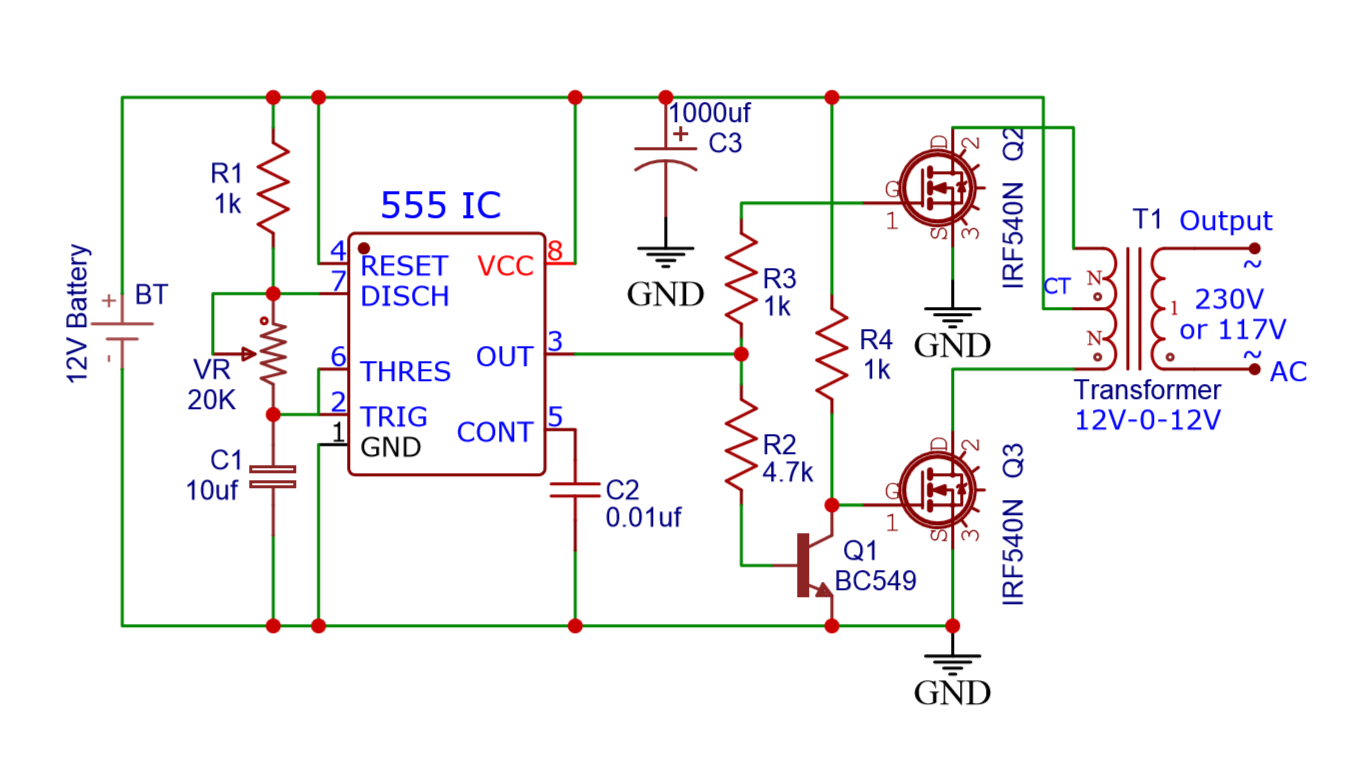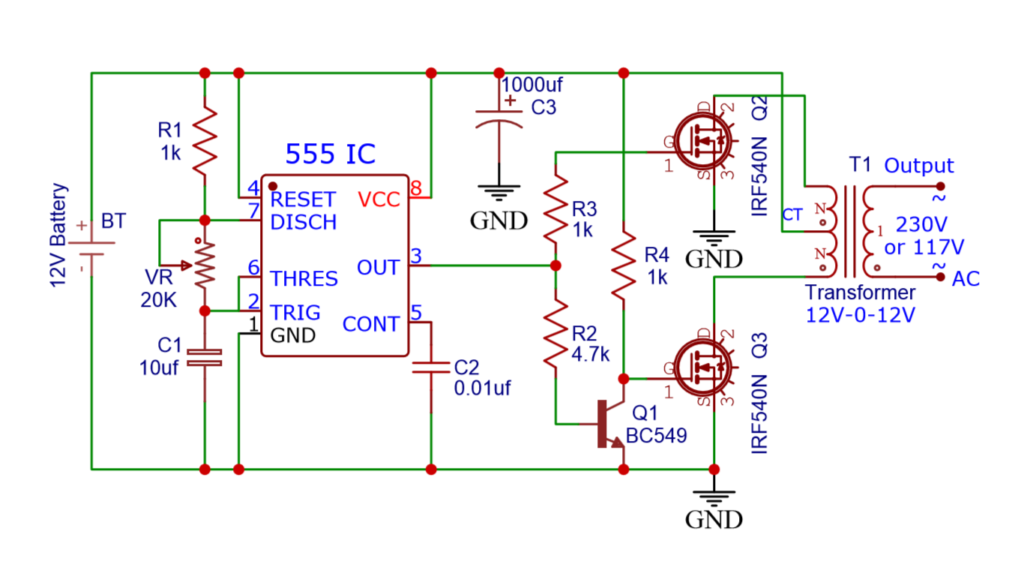For more details on ic 555, you can download the datasheet below the article.
12v to 230v inverter circuit diagram:
Components for Inverter:
- 555 timer IC
- T1 step-up Transformer (12 to 240V)
- C1 10uF (non-polar)
- C2 10nF (non-polar)
- C3 1000uf (25V electrolytic)
- Q1 BC549
- Q2 IRF540N
- Q3 IRF540N
- VR 20k pot
- R1, R3, R4 1kΩ(1/4watt)
- R2 4.7kΩ(1/4watt)
- 12V Power supply circuit
Working of 12v to 230v inverter circuit diagram using 555 IC:
555 IC is a timer which is used to generate time delay with great accuracy. Some resistors and capacitors are used to do this function. The frequency of 555 is 50/60Hz. So, PWM of 50Hz or 60Hz is produced which drives the transistors to change the voltage w.r.t time because Transformers work on AC. The transformer steps up the voltage to 240V. Make Sure the battery ampere-hour should be enough to drive the 100watt load on the output.
Adjust VR 20k (pot.) to get 50 or 60Hz frequency.
555 timer IC:
The 555 timer IC generates a square wave of 50/60Hz frequency. The output frequency depends on the capacitor C1, 20k potentiometer, and R1 resistor. By varying the 20k pot adjust the frequency of the output wave.
MOSFET Driver Circuit:
This circuit includes two MOSFETs IRF540N and one BC549 transistor and some resistors.
The output from 555 timer is fed to the gates of the MOSFETs. When the output of 555 timer is low transistor Q3 becomes active due to the presence of a voltage at its gate. This leads to flow of current from Q3 to the secondary coil of the transformer which creates a high voltage across the primary coil (nearly120V).
When the output of the 555 goes low to high the transistor Q1 becomes short-circuited and thus the transistor Q3 becomes inactive. Meanwhile, transistor Q2 becomes active and draws current from the secondary coil of the transformer, due to this the next opposite half cycle is induced in the primary of the transformer.
By this push-pull arrangement, a low voltage at secondary coil induces a high voltage across the primary coil of the transformer.
Note and safety precautions:
The above circuit involves high voltage, so precautions must be taken while testing and operation of the circuit.
The circuit made in this project is good for powering a light bulb small fan and some other insensitive devices. But it is not a reliable solution because of the following reasons.
- The output is not sinusoidal in nature hence can’t be used for sensitive loads
- The output voltage is directly dependent on the input voltage.
- A small change in input side voltage may affect largely on the output voltage( may lead to a voltage spike).
- The input battery voltage may fluctuate or may get imbalanced if an unbalanced load is applied.
- This circuit does not have a feedback loop which becomes a big problem if there was a feedback loop the output could be controlled easily.
- Also, the load affects the frequency of the astable multivibrator.
if you have any query related to this circuit, feel free to ask.


its real cicuit diagram are not please confirm me????
It will do the job